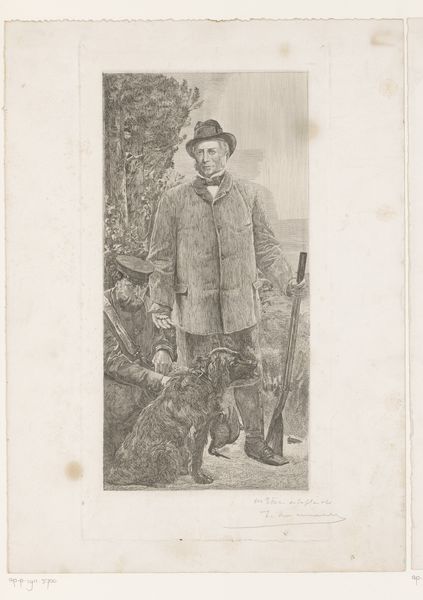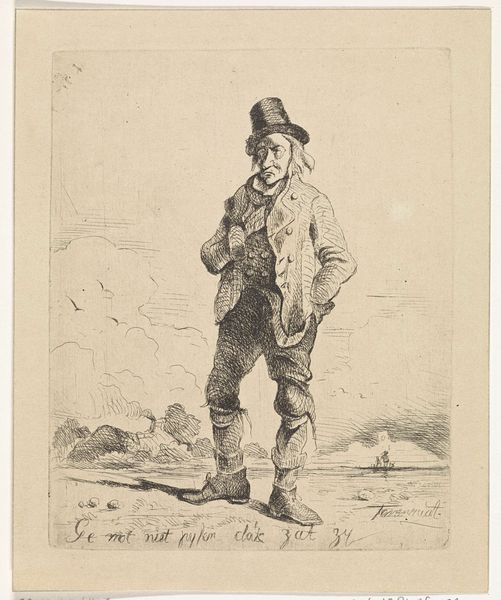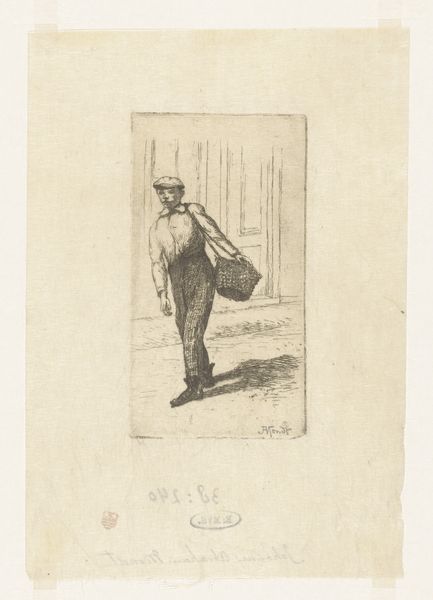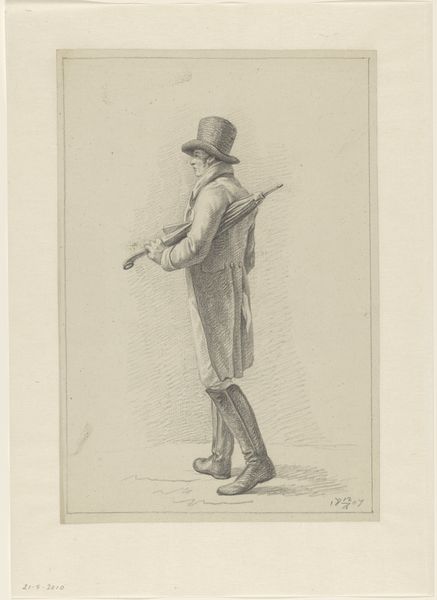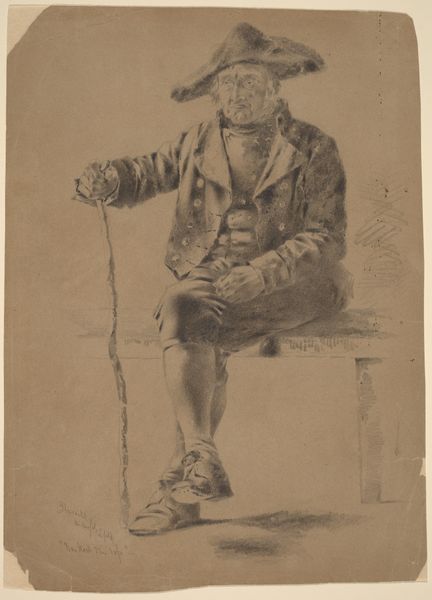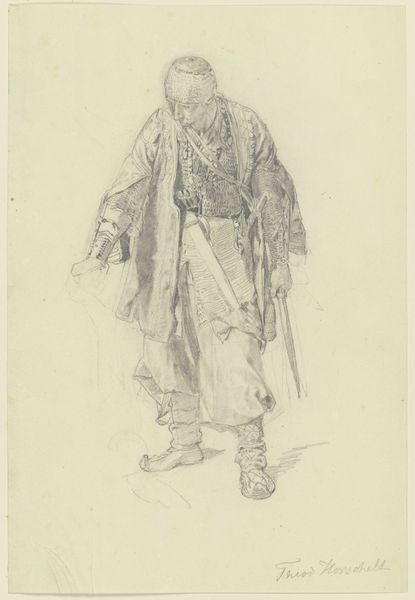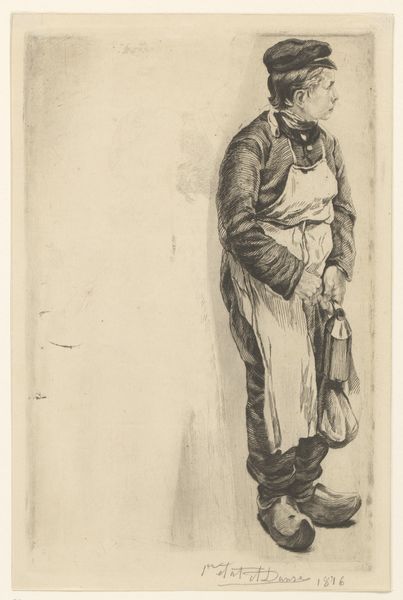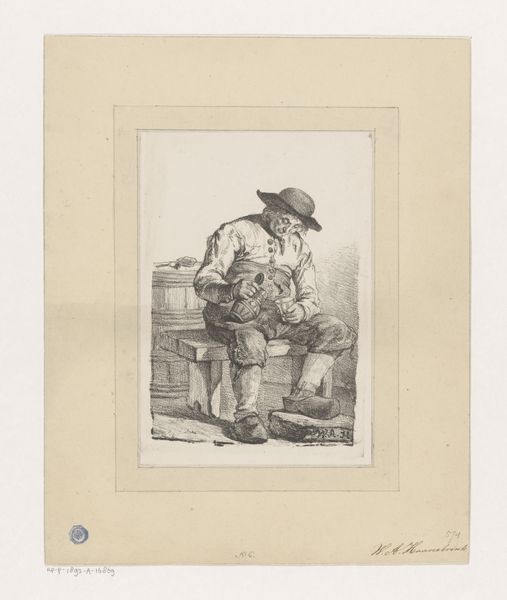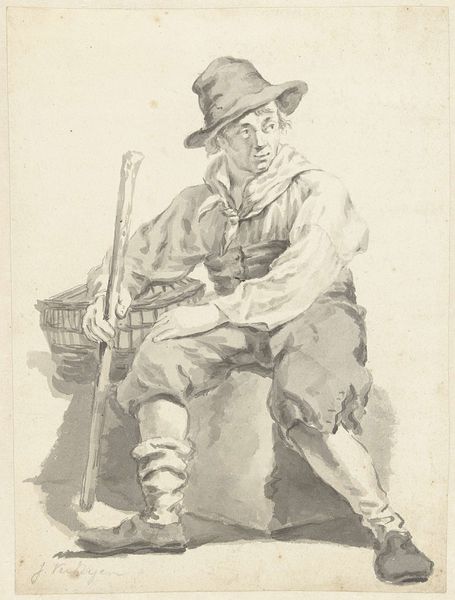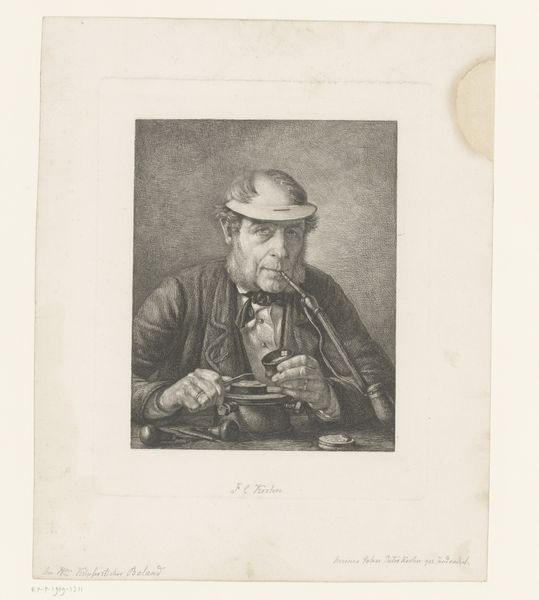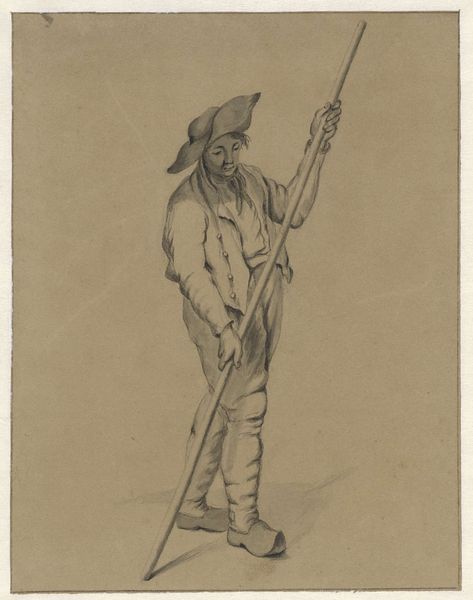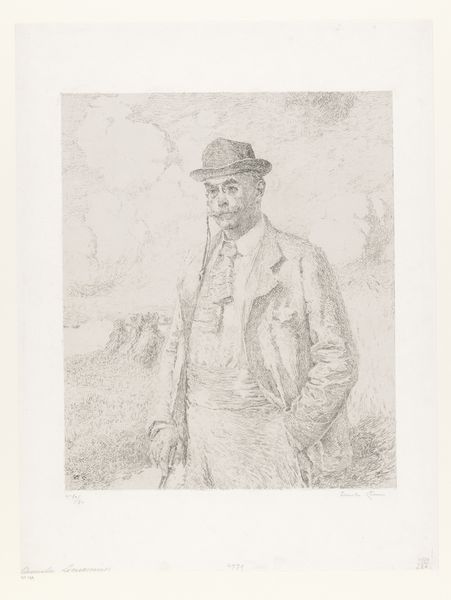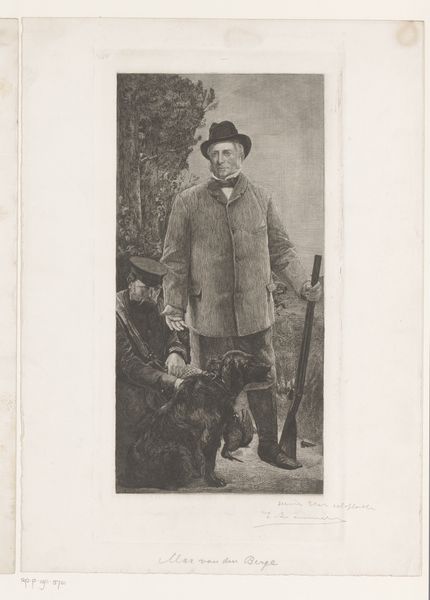
etching
#
portrait
#
etching
#
genre-painting
#
realism
Dimensions: height 178 mm, width 140 mm
Copyright: Rijks Museum: Open Domain
Curator: This etching, made sometime between 1865 and 1909, is entitled "Oudere man met hoed en een stoel over zijn schouder"—that translates to "Old Man with Hat and a Chair over His Shoulder"—by Pierre Jacques Dierckx. It depicts precisely that. What’s your initial take on this piece? Editor: Immediately, a feeling of weariness washes over me. His expression, the droop of his posture—it speaks volumes, doesn't it? It’s intensified by the way the etching captures the detail in his weathered face. Curator: Indeed. Let's consider the technique of etching. The lines etched into the metal plate and subsequently printed create a texture that speaks to the subject's own worn existence. Think about the labour involved—the meticulous scratching, the inking, the pressing. This labour echoes, perhaps even elevates, the labour implied in the old man’s daily life. Editor: That makes me think about the symbolism of the chair itself. Is it simply an object of work, carried for repair or sale? Or might it represent a lost sense of rest, comfort, or belonging? He carries the weight of something that should be supporting him. Curator: It's interesting to think about what the chair represents, but focusing on the materials themselves brings forth the social context; etched prints like this were more easily reproducible, and therefore more accessible to a wider audience than a painting, allowing for dissemination of genre paintings, which brought depictions of everyday folk into the popular consciousness. Editor: It speaks to how images could disseminate values and narratives, too. He's framed as a figure of quiet dignity, bearing his burdens without complaint. We bring our own interpretations based on what we see conveyed through those lines. Even today. Curator: I concur. What stands out to me is the democratization of art made possible through such means, connecting to wider debates about labor, value, and representation of working classes. Editor: And it invites us to contemplate how individual burdens intersect with those broader themes of age, labor, and perhaps a poignant, universal sense of displacement. Thank you for shedding light on the processes by which Dierckx arrived at this deeply affective and memorable piece.
Comments
No comments
Be the first to comment and join the conversation on the ultimate creative platform.

